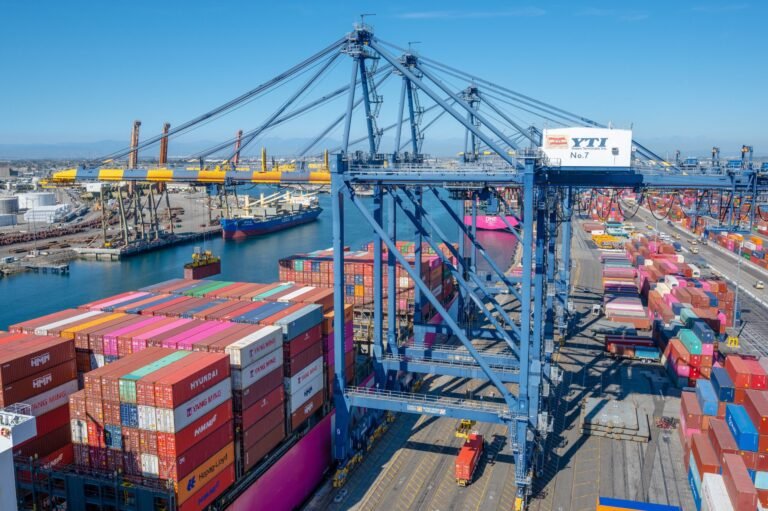The Port of Los Angeles is facing a significant decline in cargo volumes, with inbound shipments expected to plummet by 35% next week compared to last year. This drop is a direct result of major American retailers halting shipments from China in response to unprecedented tariff increases imposed by the Trump Administration.
Gene Seroka, the Executive Director of the Port of Los Angeles, recently disclosed that Chinese shipments, which make up about 45% of the port’s volume, will see a sharp decrease in the coming months. The Port of Los Angeles, alongside the Port of Long Beach, is the nation’s busiest container port and serves as a crucial barometer of U.S. economic health.
The impact of this decision is already evident, with 20 cancelled sailings scheduled for May, accounting for approximately a quarter of the normal arrival volumes, according to Seroka.
This situation stems from President Trump’s “Liberation Day” tariffs, which imposed a 145% duty on Chinese goods and triggered retaliatory tariffs from China.
The National Retail Federation (NRF) anticipates that this decline will bring an end to 19 consecutive months of year-over-year growth in U.S. imports. The NRF’s Global Port Tracker report projects a 20.5% decrease in May volumes, dropping to 1.66 million TEU from the previous year. The downward trend is expected to continue into the summer, with June volumes forecasted at 1.57 million TEU, the lowest since February 2023.
These projections follow a strong performance by the Port of Los Angeles in the first quarter of 2025, processing 2.5 million TEUs, which was 5.2% higher than the previous year. Seroka attributes this strong start to front-loading that began as early as last summer, with a final surge in March.
However, Seroka warns that retailers currently have only 5-7 weeks of full inventories left, after which consumers may experience limited product choices on shelves and price increases.
“Nobody wins,” Seroka emphasized, highlighting that “the pain is felt on both sides of the Pacific.” He also noted that while shipping lines may add some calls in Southeast Asia, other countries will be unable to fully compensate for China’s significant market share.
In a recent interview, Seroka drew parallels between the current situation and the peak of the COVID-19 pandemic, pointing out the ripple effects on various sectors of the economy.
U.S. Treasury Secretary Scott Bessent downplayed the situation, suggesting that there wouldn’t be significant supply chain shocks and that retailers have managed their inventory effectively in anticipation of these changes.
According to NRF projections, total U.S. imports could plummet by at least 20% year-over-year in the second half of 2025, leading to a potential cargo volume decline of 15% or more for the entire year unless conditions change. However, given the ongoing tariff negotiations, all forecasts remain highly uncertain.
“In this environment of complete uncertainty, our forecast for import cargo will be subject to significant adjustments over the coming months,” said Ben Hackett of Hackett Associates, which produces the Global Port Tracker report with the NRF. “At present, we expect to see imports begin to decline by May and that they will drop dramatically during the remainder of the year.”
Subscribe for Daily Maritime Insights
Sign up for gCaptain’s newsletter and never miss an update
— trusted by our 109,149 members

